
Roots
There resides within each strand of textured hair a story, ancient and profound, waiting for its quiet unveiling. It speaks of ancestral wisdom, of hands tending to coils and kinks under vast skies, long before laboratories quantified molecular bonds or stylists spoke of porosity. Our modern understanding of hair dryness, often framed by the urgency of quick fixes, sometimes overlooks the enduring lessons held within these traditional practices. We stand at a threshold, where the delicate touch of heritage meets the grounded presence of science, inviting us to ponder ❉ did these practices, passed down through generations, truly hold scientific benefits for the often-challenging condition of dryness?
The quest for hydrated hair is a timeless one, particularly for those with curls, coils, and waves, whose unique structure naturally predisposes them to moisture loss. The elliptical shape of these hair strands, combined with their curved follicular path, makes it more challenging for natural oils produced by the scalp to travel down the entire length of the hair shaft, leaving the ends particularly vulnerable to desiccation. This inherent characteristic often results in hair that absorbs water quickly but then just as rapidly releases it into the air. Understanding this foundational aspect of textured hair anatomy forms the initial step in appreciating the intuitive genius of traditional care.

Hair’s Thirst A Molecular Dialogue
To truly appreciate how ancient methods addressed dryness, we must first consider the very nature of hair. Each strand is a complex protein filament, primarily composed of keratin. The outermost layer, the cuticle, resembles overlapping scales, like shingles on a roof. When these scales lie flat, they create a smooth surface that reflects light and effectively seals in moisture.
When they are raised, however, the hair becomes more porous, allowing water to enter easily, yet also permitting it to escape with similar ease. This dance between absorption and retention defines a hair strand’s porosity, a concept now widely discussed in contemporary hair science, yet implicitly understood by those who developed practices centuries ago.
The challenge of dryness in textured hair often stems from its predisposition towards higher porosity. This means the cuticle layers may naturally possess slight lifts or become raised more readily due to environmental factors, mechanical manipulation, or even genetics. A study by Kimum Park presented data suggesting that very curly hair does indeed swell more than straighter hair types, indicating a higher propensity for water uptake and, by extension, moisture loss if not properly sealed.
This swelling and deswelling cycle, known as hygral fatigue, can further compromise the cuticle over time, exacerbating dryness and fragility. Traditional practices, through their consistent application of emollients and protective measures, sought to counteract this inherent vulnerability, creating a protective shield around the hair shaft.
The very structure of textured hair often makes it prone to moisture loss, a challenge intuitively addressed by age-old practices.
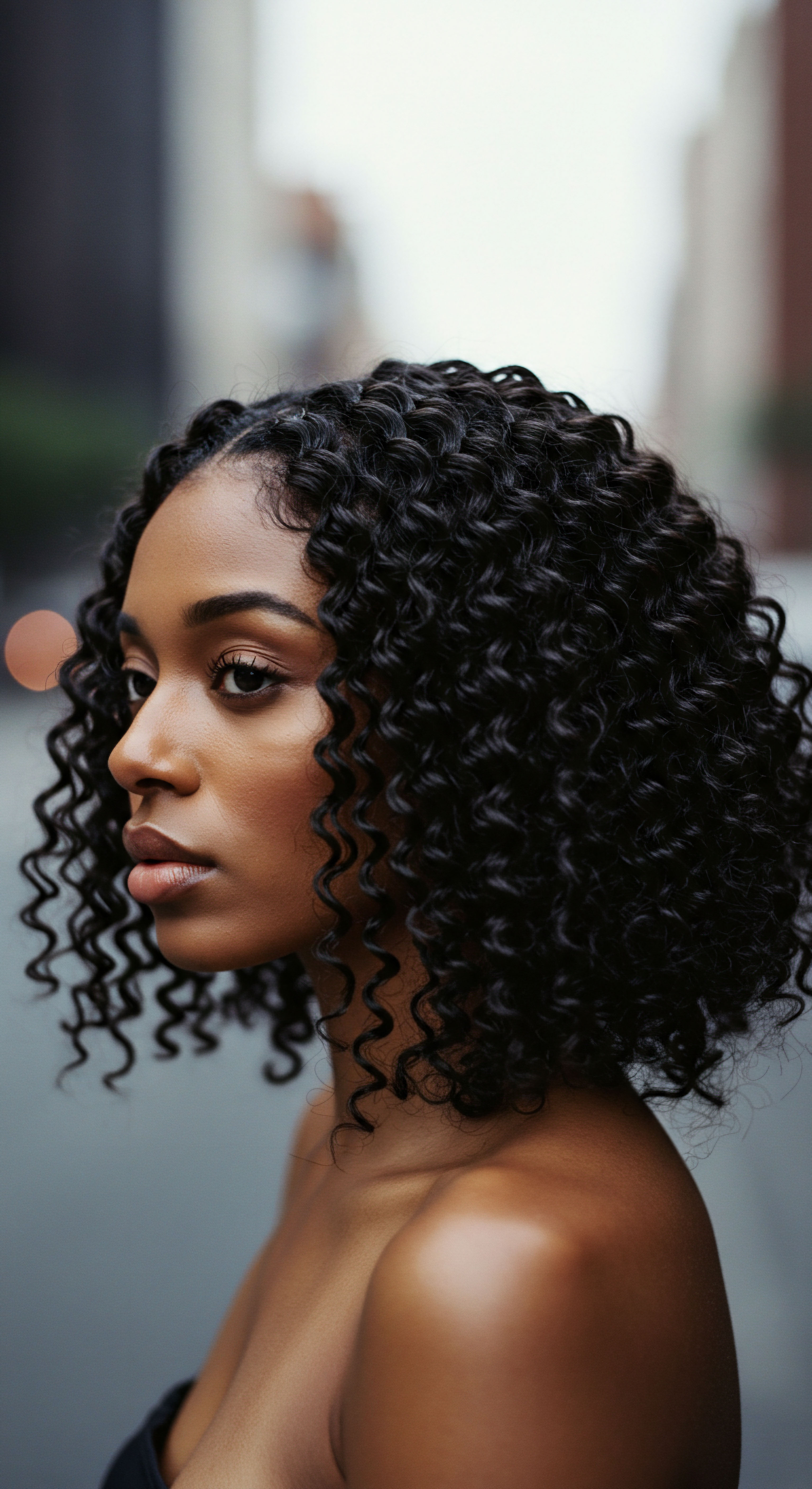
Ancient Insights into Hair’s Structure
Long before electron microscopes revealed the intricate details of the hair shaft, communities around the globe developed sophisticated methods for hair care. These were not random acts; they were often responses to specific environmental conditions and the unique needs of their hair types. In arid climates, for instance, the focus was intensely on preserving every drop of moisture. The materials used—natural oils, butters, and plant extracts—were selected for their ability to coat, penetrate, and protect.
Consider the role of Lipids in hair health. These fatty compounds are a vital part of the hair’s natural barrier, helping to prevent water loss. When hair lacks sufficient lipids, it becomes more susceptible to dryness.
Many traditional practices centered on the application of plant-derived oils and butters rich in these essential fatty acids. These applications were not merely cosmetic; they served a crucial biological purpose, replenishing the hair’s lipid content and reinforcing its natural defenses against environmental dehydration.
The foundation of healthy hair lies not just in its structure, but also in the health of the scalp from which it grows. Traditional practices recognized this deep connection. A nourished scalp provides the optimal environment for hair follicles, supporting strong, resilient strands. Many ancient hair rituals included scalp massage and the application of botanical preparations designed to soothe, cleanse, and stimulate the scalp, promoting circulation and ensuring a balanced microbial environment.
| Porosity Level Low Porosity |
| Characteristics Tightly closed cuticles; resists moisture entry but retains it well once inside. |
| Traditional Countermeasures Warm oil treatments, diluted herbal rinses to encourage cuticle lift for absorption. |
| Porosity Level Normal Porosity |
| Characteristics Balanced cuticles; absorbs and retains moisture effectively. |
| Traditional Countermeasures Regular oiling, gentle cleansing, protective styling for maintenance. |
| Porosity Level High Porosity |
| Characteristics Open, raised, or damaged cuticles; absorbs moisture quickly but loses it rapidly. |
| Traditional Countermeasures Heavy butters, thick oils, protein-rich plant applications to seal and reinforce. |
| Porosity Level Traditional practices intuitively adapted to different hair needs, even without modern scientific terminology. |

Ritual
Stepping from the quiet understanding of hair’s foundational make-up, we move into the vibrant space of ritual – the daily and periodic practices that shaped hair care for millennia. For many, these routines were not merely about appearance; they were acts of reverence, self-care, and community connection. As we seek answers to how traditional hair practices offered scientific benefits for dryness, we find ourselves examining the methods, the ingredients, and the very cadence of these age-old customs. It is here, in the practical application of ancestral wisdom, that the gentle guidance of Roothea truly comes alive.
The pursuit of moisture was, and remains, a central theme for textured hair. Modern science confirms that curly and coily hair, due to its unique helical structure, experiences more twists and turns along the shaft, creating points where the cuticle can lift. This architectural characteristic means that natural sebum struggles to travel down the entire length of the strand, leaving the ends particularly susceptible to environmental desiccation. Traditional practices countered this by consistently introducing external moisturizing agents and employing techniques that physically sealed the hair.
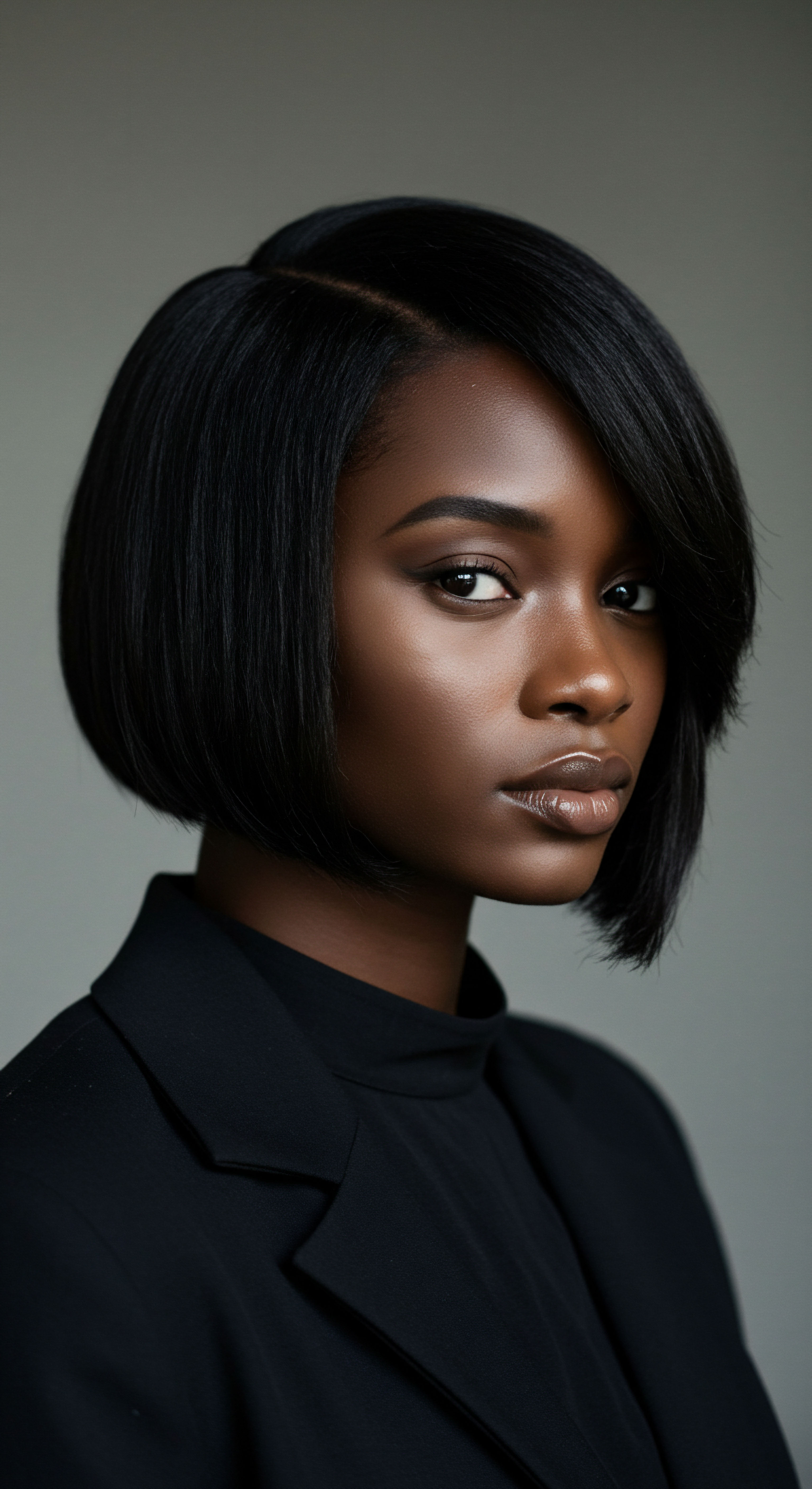
How Did Traditional Practices Deliver Moisture?
Many ancient cultures relied heavily on plant-derived oils and butters, understanding their unique properties through generations of observation. Shea Butter, a staple in West African hair care, provides a compelling illustration. This natural fat, extracted from the nuts of the shea tree, is rich in fatty acids like oleic and linoleic acid, along with vitamins A and E. Scientific research supports shea butter’s emollient properties, confirming its ability to trap moisture within the hair shaft and on the skin.
A 2018 article highlights shea butter’s components, including triterpenes, which possess anti-inflammatory and antioxidant properties, supporting cell proliferation and collagen deposition. When applied to hair, it creates a protective barrier, reducing moisture evaporation and providing a softening effect. This physical barrier was a primary scientific benefit, shielding the hair from drying elements.
Similarly, the practice of Hair Oiling, deeply rooted in South Asian and African traditions, served as a profound moisture-retention strategy. Oils such as coconut oil, castor oil, and amla oil were not just applied; they were often warmed and massaged into the scalp and strands. This warming gently lifts the cuticle, allowing the beneficial lipids to penetrate more effectively.
A 1999 study on coconut oil demonstrated its capacity to reduce the tendency of the hair cuticle to swell, thereby decreasing protein loss when used as a pre-wash treatment. This protective action helps maintain the structural integrity of the hair, making it less prone to breakage and, consequently, better able to hold moisture.
Ancient rituals, such as shea butter application and hair oiling, created physical barriers and infused hair with lipids to combat dryness.
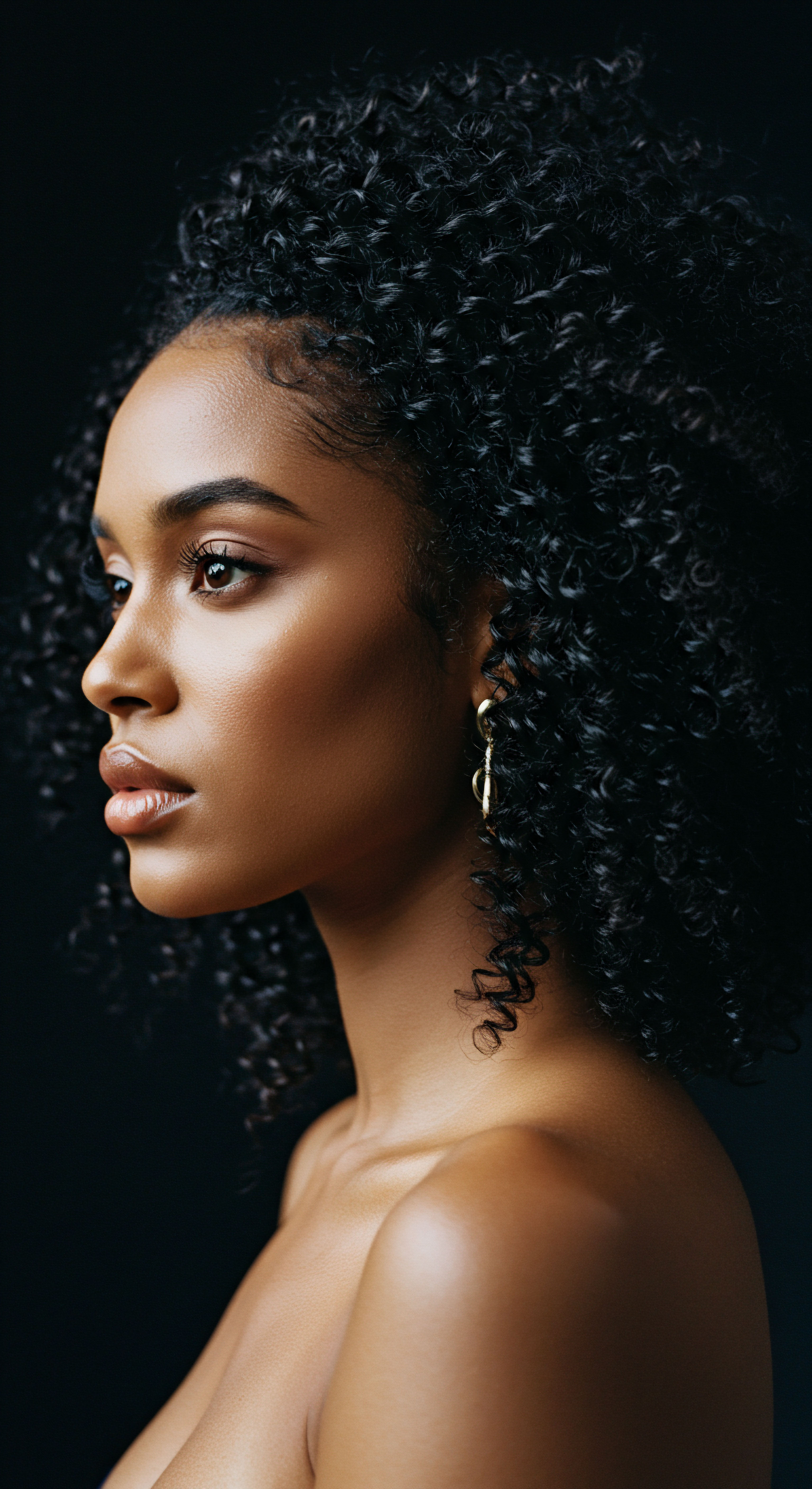
The Role of Botanical Powders and Cleansers
Beyond oils and butters, various botanical powders and natural cleansers played a significant role. Chebe Powder, originating from Chad, is a remarkable example. Made from a blend of ingredients including chebe seeds, lavender, neem, and clove, it is traditionally applied as a paste to the hair lengths. Its primary benefit lies in its ability to seal in moisture, coating the hair shaft and reducing water loss through evaporation.
While it does not directly stimulate hair growth, its consistent use reduces breakage, allowing for length retention. This coating action effectively mimics a modern sealant, providing a scientific advantage against dryness by preserving the hair’s hydration levels.
Natural cleansers, such as African Black Soap, also played a complex role. Crafted from plantain skins, cocoa pods, palm kernel oil, and shea butter, these soaps were used for gentle cleansing. While some traditional formulations can be alkaline, potentially stripping hair if not followed by an acidic rinse, modern adaptations aim for a balanced pH (between 5 and 6) to support the scalp’s microbiome.
Its natural saponins and antioxidants cleanse without overly stripping beneficial bacteria, setting the stage for healthy moisture balance. The careful selection of ingredients, even in cleansing agents, underscores a nuanced understanding of hair and scalp equilibrium.
- Shea Butter ❉ provides emollient properties, sealing moisture into the hair.
- Coconut Oil ❉ penetrates the hair shaft, reducing protein loss and preventing cuticle swelling.
- Chebe Powder ❉ coats hair strands, acting as a moisture sealant to reduce evaporation.
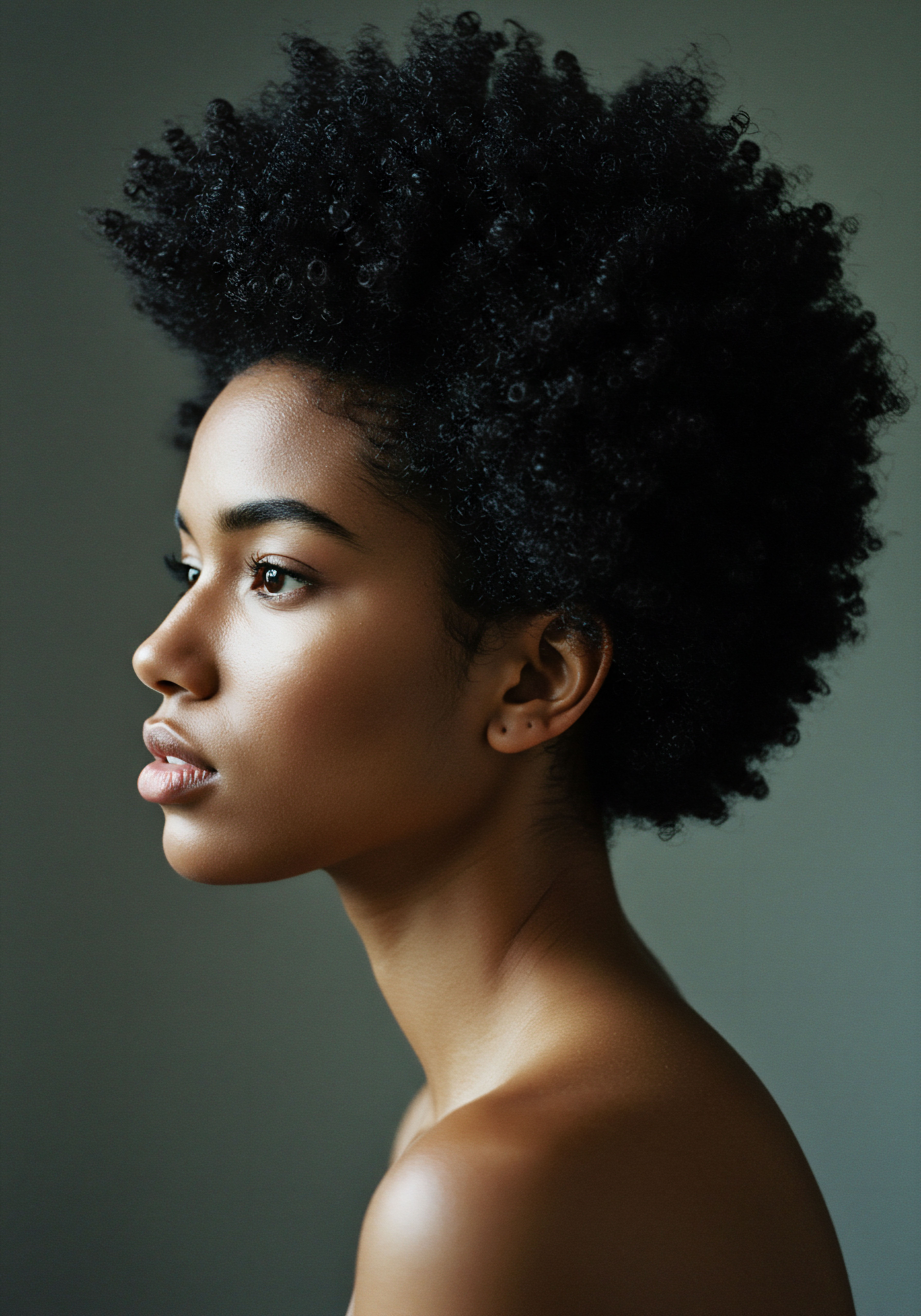
Protective Styling and Its Hydrating Legacy
Traditional protective styles, such as braids, twists, and various forms of threading, offered another layer of scientific benefit against dryness. By tucking away the hair ends, which are the oldest and most fragile parts of the strand, these styles minimized exposure to environmental aggressors like sun, wind, and friction. Reduced exposure meant less moisture evaporation and less mechanical damage, which often leads to raised cuticles and subsequent dryness.
While the scientific community now studies the impact of these styles on tensile strength and breakage, traditional communities understood their protective qualities through observation and experience. The continuity of these practices across generations, often evolving to suit different climates and hair types, speaks to their effectiveness in preserving hair health and combating the persistent challenge of dryness.

Relay
As we deepen our understanding, moving beyond the surface of practice into the intricate interplay of science, culture, and context, the question of whether traditional hair practices offered scientific benefits for dryness becomes even more compelling. This is where the wisdom passed through generations begins a sophisticated dialogue with contemporary research, revealing profound connections that were perhaps intuitively understood long before they were formally categorized. The essence of Roothea’s pursuit lies in this rich, multi-dimensional exploration, unearthing the subtle yet powerful truths that link ancient customs to modern hair wellness.
The unique structural characteristics of textured hair, with its inherent coil and often higher porosity, present a persistent challenge for moisture retention. This architectural reality means that hair readily absorbs water but also releases it with comparative speed, leading to a perpetual state of dryness if not adequately addressed. The ingenuity of traditional practices, then, rests in their holistic and consistent approach to sealing, nourishing, and protecting the hair fiber from this moisture ebb.

Can Hair Porosity Be Managed by Ancestral Wisdom?
Hair porosity, the measure of how readily hair absorbs and retains moisture, is a significant factor in hair dryness. High porosity hair, often characterized by raised cuticles, permits water to enter easily but also allows it to escape rapidly. Conversely, low porosity hair, with its tightly bound cuticles, resists moisture penetration. Traditional practices, without the aid of modern diagnostics, developed methods that implicitly addressed these variations.
For high porosity hair, the consistent application of heavier oils and butters, such as unrefined shea butter or thick castor oil, served as occlusive agents. These substances created a physical barrier on the hair shaft, effectively reducing the rate of water evaporation. A 2017 study examining seed oils with similar bioactive content to shea butter found that such oils could render hair more resistant to breakage, an outcome often linked to improved moisture levels.
For hair that struggled with moisture uptake, traditional approaches often involved warming oils or using steam from heated environments, which would gently lift the cuticle to allow for deeper penetration of conditioning agents. This intuitive understanding of temperature’s impact on the hair cuticle aligns with modern cosmetic chemistry, where heat is often used in deep conditioning treatments to enhance product absorption. The meticulous selection of botanical ingredients, too, played a significant part. For instance, the fatty acid composition of certain oils, like coconut oil, allows them to penetrate the hair shaft, rather than merely sitting on the surface, offering internal fortification against protein loss and moisture depletion.
Traditional practices often countered hair dryness by creating physical barriers and infusing hair with essential lipids.
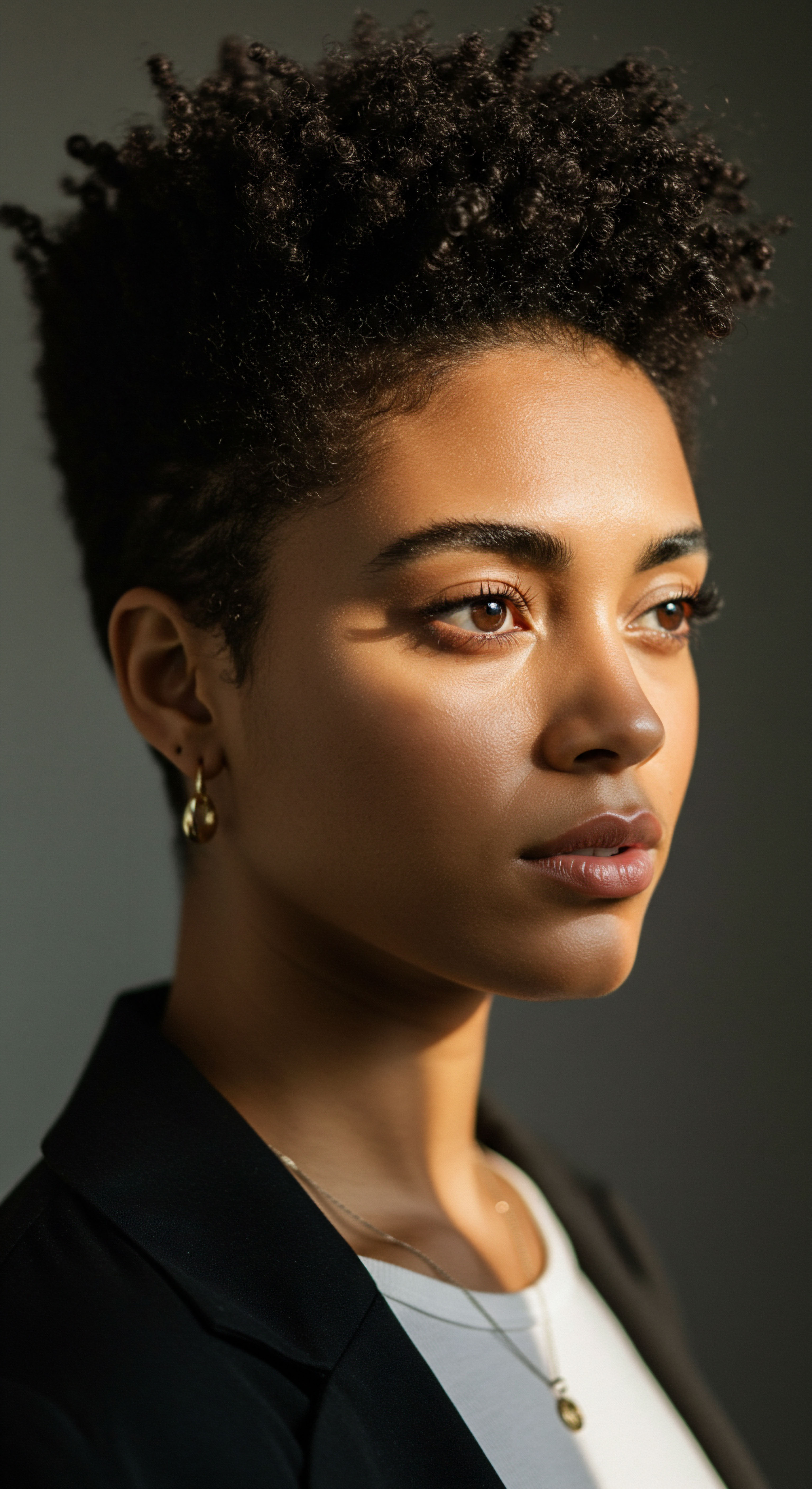
What Scientific Basis Underpins Traditional Cleansing?
Even traditional cleansing methods, often perceived as rudimentary, possessed scientific underpinnings for managing dryness. Consider the use of natural saponin-rich plants, such as soap nuts (reetha) or shikakai, in various South Asian and African communities. These natural cleansers provide a gentle lather without the harsh stripping action often associated with synthetic sulfates.
While the exact pH control of these natural cleansers varied, their traditional application often involved dilution and subsequent rinsing with acidic ingredients like apple cider vinegar or fermented rice water, which would help to reseal the cuticle and restore the hair’s natural acidic mantle. This thoughtful sequence minimized cuticle damage and preserved the hair’s natural oils, mitigating post-wash dryness.
The discussion around African black soap provides an interesting case study. While some authentic, handmade batches can have a higher alkaline pH (around 9-10), potentially causing dryness if not balanced, modern formulations often aim for a pH between 5 and 6, aligning with the scalp’s healthy acidic environment. This careful balance is crucial for maintaining the scalp microbiome, a thriving ecosystem of microorganisms that influences scalp health and, by extension, hair hydration.
When the microbiome is disrupted by overly harsh cleansing, it can lead to irritation and dryness, creating an environment unconducive to healthy hair growth. Traditional users, perhaps without knowing the microbial science, observed and adapted their practices to achieve scalp comfort and hair vitality.
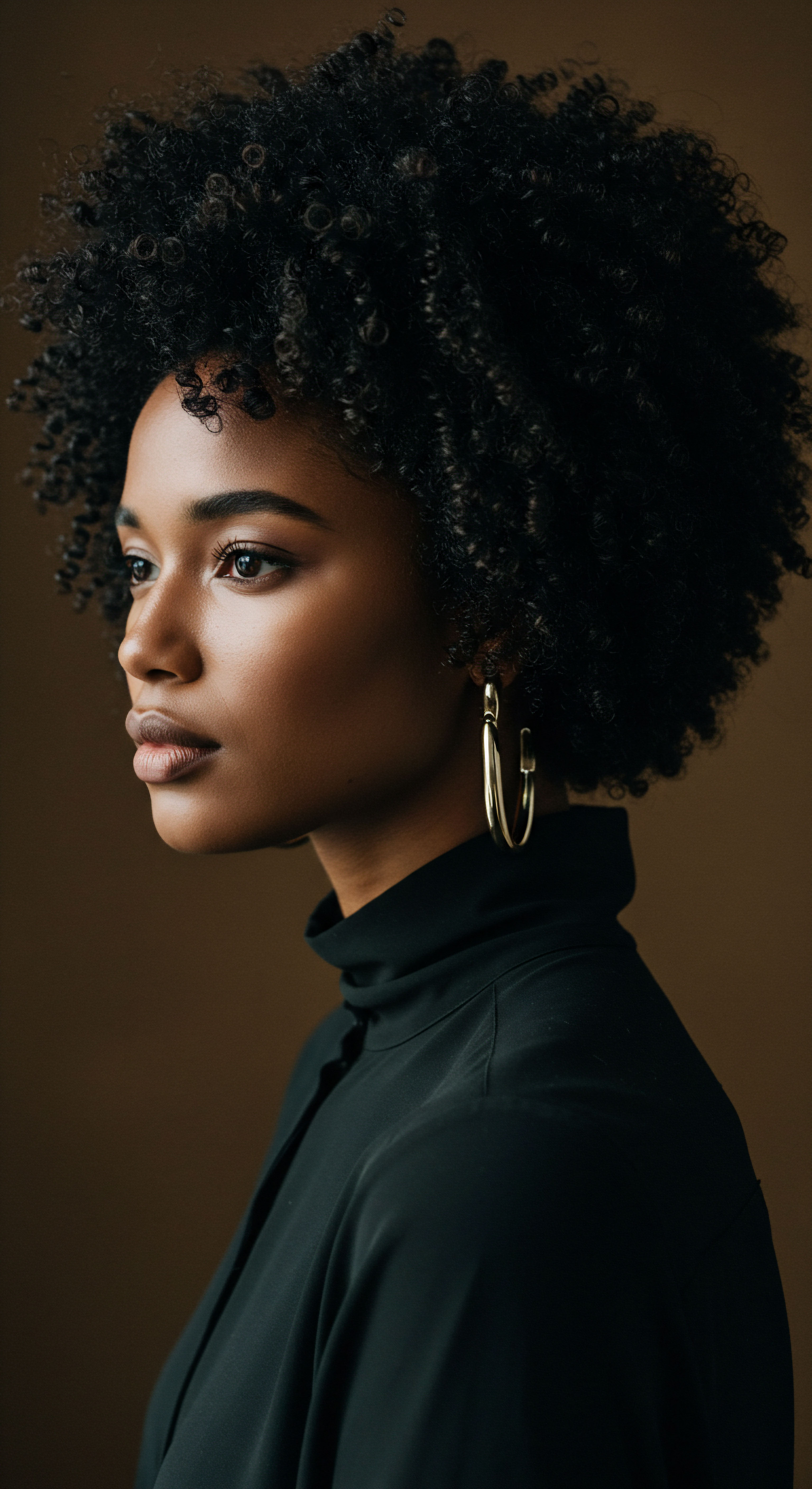
Can Cultural Practices Directly Influence Hair Health Outcomes?
Beyond individual ingredients and techniques, the cumulative effect of consistent cultural practices can offer measurable scientific benefits. A compelling illustration arises from a cross-sectional comparative study conducted in India, which investigated factors influencing hair loss among 140 Andhra and 100 Malayalam girls. The findings indicated a notably lower prevalence of hair loss among Malayalam girls, at 70%, compared to their Andhra counterparts, who experienced a 92.85% prevalence. This significant disparity was partly attributed to the Malayalam girls’ adherence to specific cultural hair care rituals.
Their routine often involved a daily head bath, preceded by a nourishing massage with coconut oil infused with hibiscus leaves and egg white. Additionally, practices like avoiding excessive sun exposure and allowing hair to air-dry loosely contributed to their hair health. The daily cleansing likely removed environmental pollutants and excess sebum that could impede follicular health, while the botanical ingredients provided documented benefits ❉ hibiscus for scalp conditioning and egg white for protein fortification. This real-world data point underscores how deeply ingrained cultural practices, when aligned with the hair’s biological needs, can translate into tangible, positive hair health outcomes.
| Ingredient Shea Butter |
| Primary Mechanism for Dryness Occlusive barrier formation |
| Scientific Rationale Rich in fatty acids (oleic, linoleic) and triterpenes, creating a protective layer that reduces transepidermal water loss and offers anti-inflammatory benefits. |
| Ingredient Chebe Powder |
| Primary Mechanism for Dryness Physical coating and sealant |
| Scientific Rationale Contains lipids and proteins that coat the hair shaft, effectively trapping moisture within the strand and minimizing evaporation. |
| Ingredient Coconut Oil |
| Primary Mechanism for Dryness Deep cuticle penetration |
| Scientific Rationale Its unique molecular structure allows it to penetrate the hair shaft, reducing protein loss and preventing hygral fatigue (swelling and deswelling). |
| Ingredient African Black Soap |
| Primary Mechanism for Dryness Gentle cleansing, microbiome balance |
| Scientific Rationale Natural saponins cleanse without harsh stripping; modern versions are pH-balanced to preserve scalp health and beneficial bacteria. |
| Ingredient These traditional components, through varied mechanisms, offer distinct advantages in managing hair dryness. |
- Botanical Extracts ❉ provide antioxidants and anti-inflammatory properties, supporting scalp health.
- Scalp Massage ❉ enhances blood circulation to hair follicles, aiding nutrient delivery.
- Protective Styles ❉ minimize environmental exposure and mechanical stress, reducing breakage.
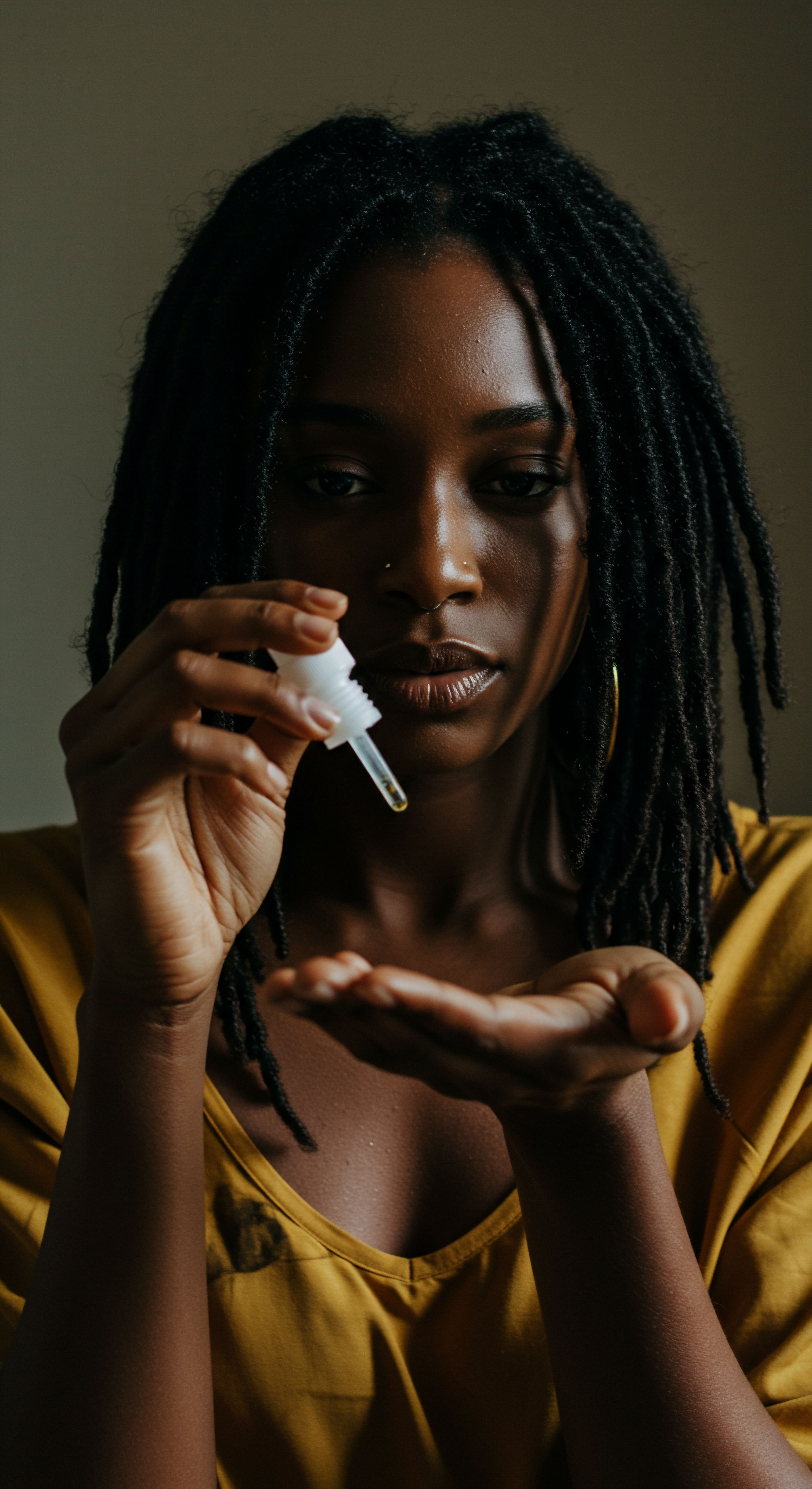
Beyond Surface Care The Systemic Link
The depth of traditional wisdom extends beyond topical applications, often recognizing the systemic factors influencing hair health. Many ancient healing systems, such as Ayurveda, connected hair vitality to overall bodily balance, including diet and stress levels. While not directly addressing topical dryness, a body in harmony often translates to healthier hair that is less prone to brittleness and moisture depletion.
Modern research is increasingly validating these systemic connections, with studies exploring the links between gut health, nutrition, and hair wellness. The emphasis on internal nourishment and stress reduction, therefore, served as a foundational, albeit indirect, scientific benefit to combat dryness from within.
The relay of knowledge from traditional practices to contemporary understanding underscores a profound truth ❉ the scientific benefits for dryness were not accidental. They were the product of careful observation, adaptation, and a deep respect for the natural world and the body’s inherent wisdom. These practices, refined over centuries, offer invaluable insights into holistic hair care that continue to inform and inspire our journey toward healthy, hydrated strands.
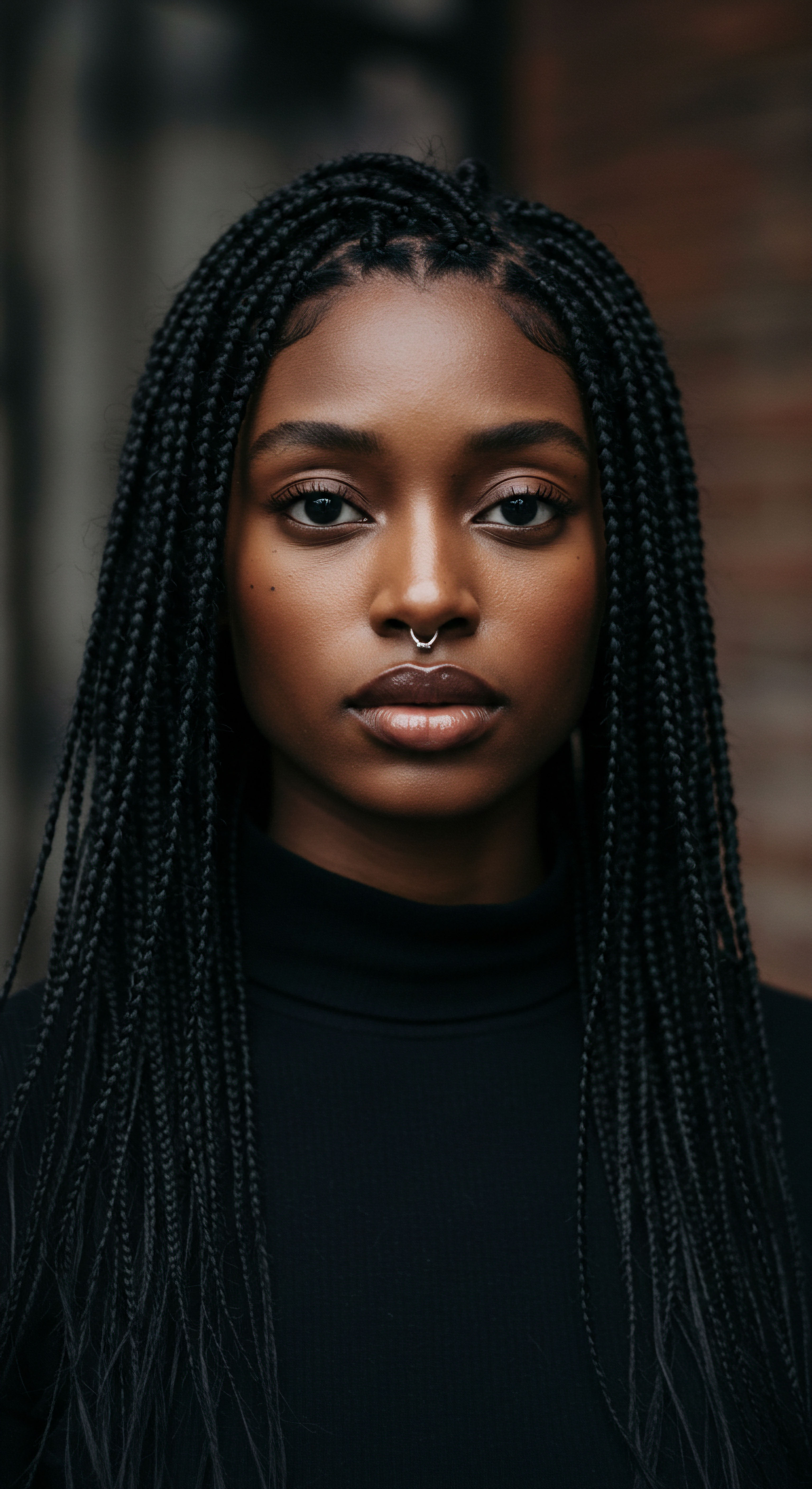
Reflection
The journey through traditional hair practices reveals a landscape rich with ingenuity, observation, and an enduring connection to the natural world. It becomes clear that the question of scientific benefits for dryness finds its answer not in simple affirmation or denial, but in a layered understanding of how ancient wisdom, often born from necessity and intimate knowledge of local botanicals, aligned with the very biological and physical needs of hair. These practices were not just rituals; they were sophisticated systems of care, intuitively addressing hair’s unique thirst long before the advent of microscopes and molecular analysis. We find a quiet reassurance in recognizing that the quest for hydrated, healthy hair is a timeless one, a shared human experience that continues to bind us to the wisdom of those who came before.
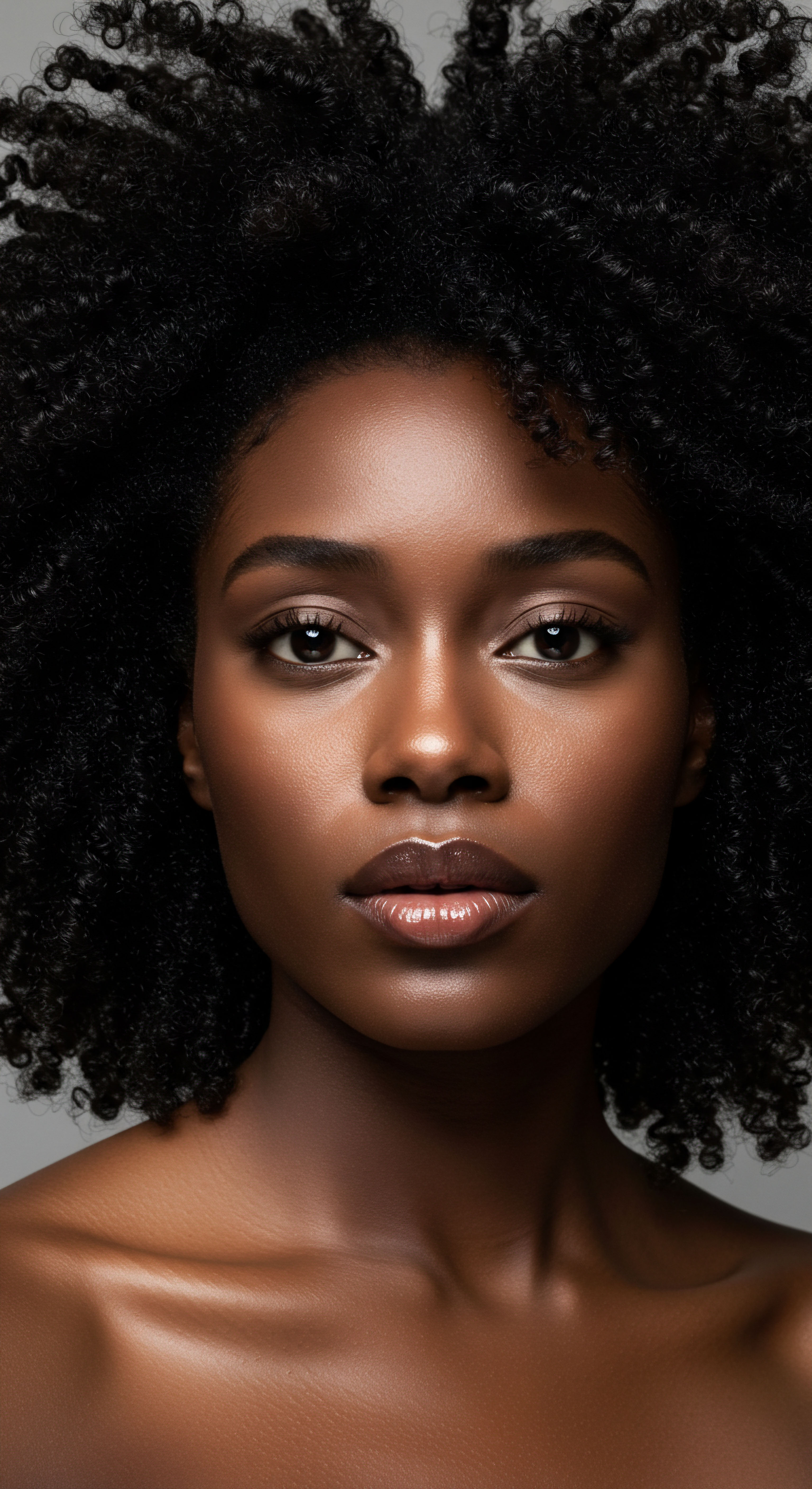
References
- Why African Black Soap Shampoo & Conditioner Are Changing the Haircare Game. (2025). Vertex AI Search.
- The Real Science Behind African Black Soap Shampoo for Hair Growth. (2025). Vertex AI Search.
- Unleash Your Hair Growth Potential With Chebe Powder. (2025). ER African Online Store.
- African Black Soap Shampoo. (n.d.). EarthRoast Coffee.
- How to Use Chebe Hair Mask ❉ Ultimate Guide for Hair Growth. (2025). Cheribe Beauty.
- Shea butter benefits ❉ Face, hair, skin, scars, and more. (2021). Medical News Today.
- Shea Butter for Hair Improves Hydration and Texture. (2022). Dr. Axe.
- Shea Butter for Hair ❉ Raw, Hair Growth, and Natural Hair. (2018). Healthline.
- Effect-of-cultural-factors-on-hair-fall.pdf. (2020). ResearchGate.
- 3 Benefits Of African Black Soap For Hair (Detailed). (n.d.). Baraka Shea Butter.
- Chebe Powder Hair Growth Secrets ❉ Science, Application, Reviews and Re. (2025). Vertex AI Search.
- Does Shea Butter Work for Hair Growth? (2020). HRC Dayton.
- Everything You Need To Know About The Ancient Art Of Hair Oiling. (2022). Newsweek.
- The Ancient Wisdom of Ayurvedic Hair Care ❉ A Journey Through Time with HerbOcean Hair Oil. (2025). Roshni Botanicals.
- Can you use raw African black soap to wash your hair, and what are the pros and cons? (2023). Vertex AI Search.
- The Magic of Chebe Powder ❉ Fact or Fiction? (2023). Chebeauty.
- Unraveling the Mystery of Hair Porosity (Low and High) ❉ A Deep Dive fo. (2024). KeraVada.
- Ayurvedic Hair Oiling. (2022). Roots & Rituals.
- Understanding Porosity ❉ The Key to Healthy Hair. (2023). FullyVital.
- Ethnopharmacological survey of home remedies used for treatment of hair and scalp and their methods of preparation in the West Bank-Palestine. (2017). PubMed Central.
- How do cultural differences in hair care practices affect hair health and growth? (2025). Quora.
- Chebe Powder vs. Traditional Oils ❉ A Wholesaler’s Guide to Choosing the Best Hair Care Products. (n.d.). sevich.
- Role and Mechanisms of Phytochemicals in Hair Growth and Health. (2023). PubMed Central.
- The Genomic Variation in Textured Hair ❉ Implications in Developing a Holistic Hair Care Routine. (n.d.). MDPI.
- (PDF) Effect of cultural factors on hair fall. (2020). ResearchGate.
- African American Women, Hair Care, and Health Barriers. (n.d.). JCAD – The Journal of Clinical and Aesthetic Dermatology.
- Original Article Ethnobotanical Survey of Medicinal Plants used in the Treatment and Care of Hair in Karia ba Mohamed (Northern. (n.d.). ResearchGate.
- Hair oiling ❉ a paradigm shift in the deep-rooted ritual from East to West. (2024). British Journal of Dermatology.
- An Ethnobotanical Study of Medicinal Plants Traditionally Used for Treatment of Hair Problems in Nuapadhi Village from Baleswar. (2024). Indiana Publications.
- Contemporary African-American Hair Care Practices. (2015). Vertex AI Search.
- (PDF) Herbal hair oil ❉ A review. (n.d.). ResearchGate.
- An Overview on Hair Porosity. (2020). NYSCC.
- (PDF) Porosity at Different Structural Levels in Human and Yak Belly Hair and Its Effect on Hair Dyeing. (2020). ResearchGate.
- Cosmetopoeia of African Plants in Hair Treatment and Care ❉ Topical Nutrition and the Antidiabetic Connection? (n.d.). MDPI.
- Hot Topics in Textured Hair Research ❉ Hair Porosity and Hair Braiding Damage. (2020). Vertex AI Search.
- Formulation and Evaluation of Herbal Hair Tonic ❉ A Comprehensive Review. (n.d.). Vertex AI Search.
- Historical Perspectives on Hair Care and Common Styling Practices in Black Women. (2025). Vertex AI Search.
- Ethnobotanical Survey of Medicinal Plants used in the Treatment and Care of Hair in Karia ba Mohamed (Northern Morocco). (2024). ResearchGate.
- Contemporary African-American Hair Care Practices. (2015). Vertex AI Search.
- Hair Care Cosmetics ❉ From Traditional Shampoo to Solid Clay and Herbal Shampoo, A Review. (2019). MDPI.
- (PDF) A Review Of Indigenous Therapies For Hair And Scalp Disorders In Nigeria. (n.d.). ResearchGate.
- Hair Oils ❉ Indigenous Knowledge Revisited. (n.d.). PMC.
- Afro-textured hair. (2023). EBSCO Research Starters.